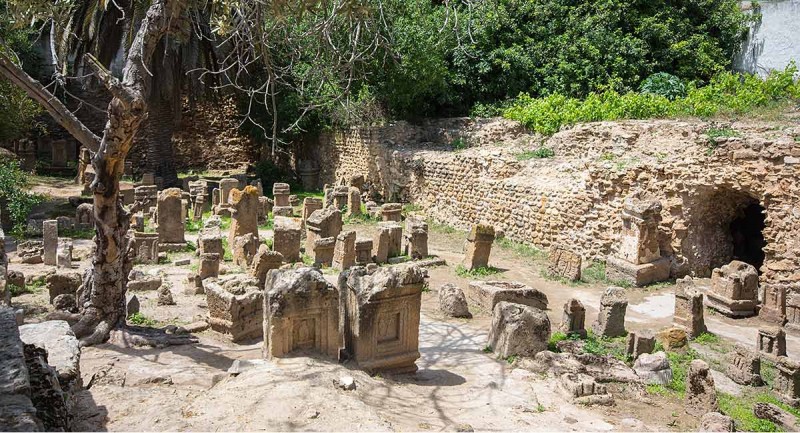The French writer Gustave Flaubert, whose bicentenary is being celebrated, popularized Carthage with his novel Salammbô. But it also spread certain prejudices on the Carthaginians.
Salammbô is the heroine invented by Flaubert for his
novel which takes place in
Carthage, at the time when it was the most powerful city of the Mediterranean West.
Sister of Hannibal and priestess of the Moon, she finds herself at the heart of a furious epic in which the author allows himself all the excesses.
Superspectacular scenes, descriptions of battles, luxury and mysteries of the East, violence and sensuality… a real Hollywood movie before its time!
An exhibition devoted to Flaubert’s novel, currently on view in Marseille (France), is scheduled for next spring at the National Museum of Bardo, in Tunis.
(Photo : poster of the exhibition)
The invention of the “Tophet of Carthage”
The novel triggered at the time a real passion for the rediscovery of Carthage.
But it also did harm to the memory of Carthage by installing certain false images…
Indeed, in order to write his novel, Flaubert had read all that was known about Carthage around 1860, i.e. only the descriptions of Greek and Latin authors.
Then, the novelist gave free rein to his imagination from representations drawn from all over the East, from the Bible to Egyptian bas-reliefs.
And so Flaubert invented the “Tophet of Carthage” and the ceremony of “child sacrifice to the god Moloch”.
In reality, Tophet was the name of a place located… near Jerusalem. According to the Bible, human sacrifices were made there to a certain god Moloch, 400 years before the time of Salammbô.
The shortcut was obvious: Carthage had been founded by the Phoenicians, who also came from the “land of Canaan” mentioned in the Bible. So Flaubert assumed that the Carthaginians practiced the same rites!
Then, the immense success of Flaubert’s novel pushed archaeologists to look for the famous “Tophet of Carthage”… and they thought they found it.
An ancient sanctuary was discovered. It contained, among other things, the remains of young children.
But no evidence of the ritual described by Flaubert.
God Moloch or Lady Tanit?
It is true that Diodorus of Sicily had described the ceremony to the god Moloch about Carthage. But he was very hostile to the Carthaginians, and lived a century after the destruction of the city.
Today, many historians consider that the place called “Tophet” could have been a children’s cemetery. Perhaps a special ritual was performed there to the god Baal and to the “Lady Tanit”, the great maternal goddess, to dedicate to them the children who died in infancy.
But the images imposed by Flaubert were so strong that it took many years to admit it.
The giant statue of the “god Moloch”, the cruel priests, the flames of the pyre, the barbaric rituals, the blood and the screams covered the reality of the archaeological discoveries.
Today, one can visit the site called “Tophet” or “Sanctuary of Tanit and Baal” in the modern city of Carthage. There you can see many engraved steles that the ancient Carthaginians used to deposit when making a vow.
The district where the famous sanctuary is located is now called… Salammbô.
The Sanctuary of Tanit and Baal in Carthage

Read more:
Video:
The remains of Carthage

